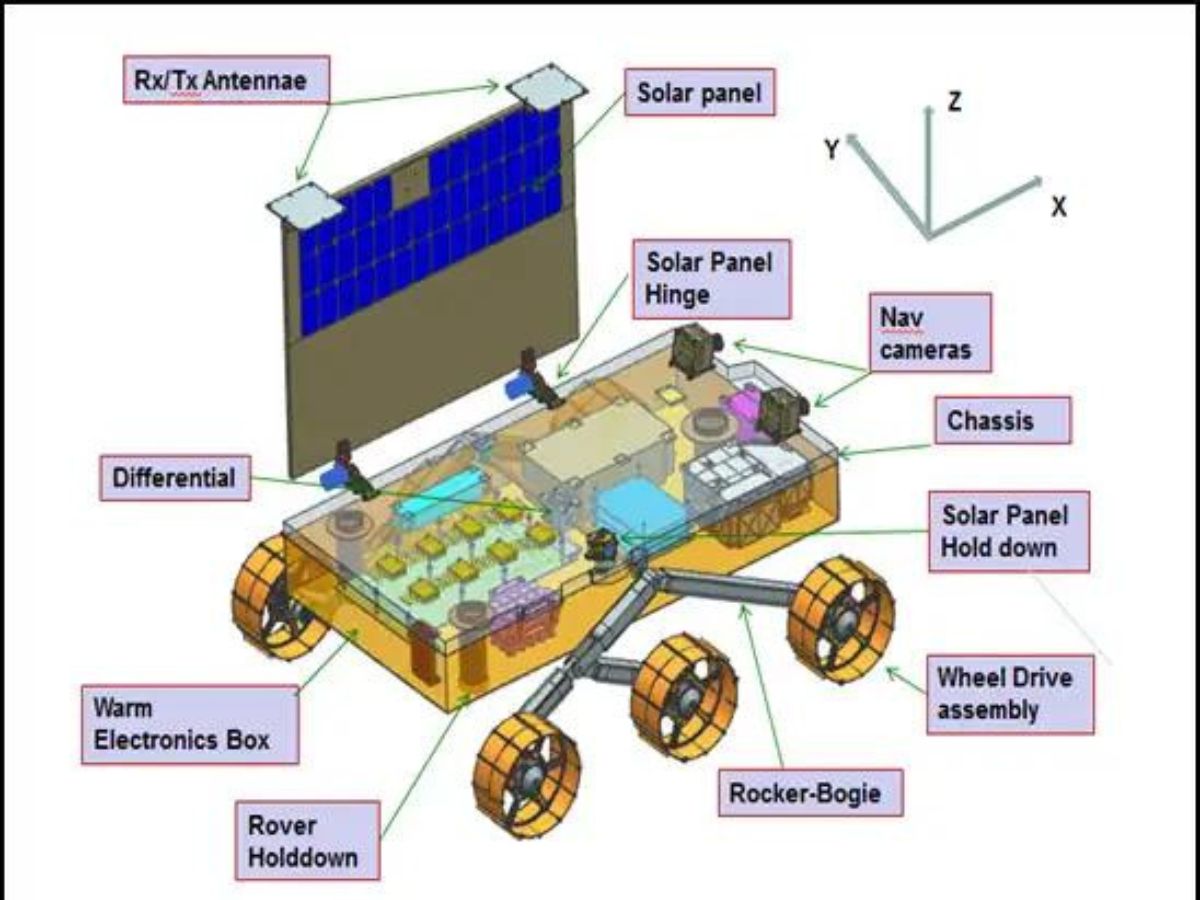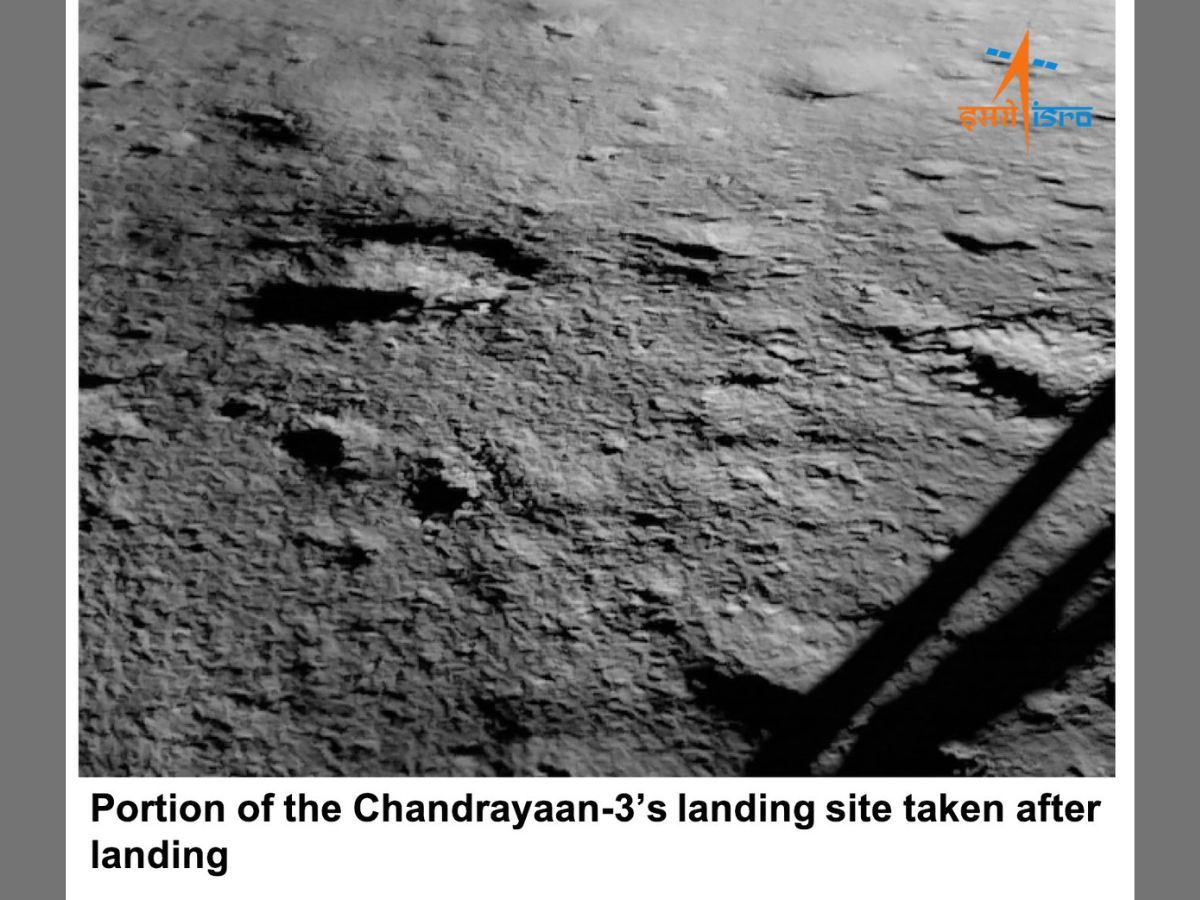Chandrayaan-3’s activities are on schedule and all activities are normal, the Indian Space Research Organisation (ISRO) said on August 24, 2023, a day after the spacecraft’s historic soft landing on the Moon’s south pole. Most of Vikram lander’s payloads have been turned on, and the Pragyan rover has begun its mobility operations. Pragyan was rolled out of Vikram on August 23, about four hours after Chandrayaan-3’s touchdown.
Vikram is a lander, and hence, will conduct experiments by remaining in a fixed position. Meanwhile, Pragyan will explore the lunar surface, performing scientific activities.
How Vikram Lander Will Benefit Earth
Vikram is equipped with four payloads: Chandra’s Surface Thermophysical Experiment (ChaSTE), Instrument for Lunar Seismic Activity (ILSA), Radio Anatomy of Moon Bound Hypersensitive ionosphere and Atmosphere (RAMBHA) or Langmuir Probe (LP), and Laser Retroreflector Array (LRA). Apart from LRA, all the lander payloads have been developed by ISRO. The LRA is an instrument developed by NASA to understand the dynamics on the Moon’s system.
ChaSTE will measure thermal properties, including temperature and thermal conductivity, of the lunar surface near the polar region; ILSA will measure seismicity around the landing site, and perform experiments to understand the difference between the lunar crust and mantle; RAMBHA will measure parameters of the plasma above the surface of the Moon. Plasma refers to the mixture of ions and electrons. RAMBHA will measure the density of these particles, and how it changes with time.
Apart from measuring the plasma density, seismic activities, and thermal properties of the lunar surface, Vikram’s payloads will measure how intense solar radiations have impacted the Moon’s surface and altered it. All these activities are significant for future lunar missions, including those in which humans intend to colonise Earth’s natural satellite.
“Vikram’s payloads will measure the near surface plasma density, how intense solar traditions have impacted the surface and altered it, carry out measurements of thermal properties of the lunar surface, and measure seismicity around the landing site to determine the stability of the lunar surface. This research is crucial for future exploration missions on the Moon, especially if humans are to stay on the lunar surface,” K. Siddhartha, Earth Scientist at ISRO and a strategic thinker, told ABP Live.
He explained that ILSA will detect and study lunar quakes, which are rumblings under the surface of the Moon. “If the rumblings are confirmed, it opens up exciting possibilities for future exploration.”
According to Siddhartha, ChaSTE will provide “valuable data” about how the lunar surface responds to temperature variations. “ChaSTE will help in understanding the processes that shaped the Moon’s terrain over millions of years.”
Explaining the functions of NASA’s LRA, Siddhartha said, “It is designed to facilitate real-time distance measurements between the Moon and Earth. This information will help in accurately predicting tidal patterns, understanding ocean currents and managing coastal environments.”
How Pragyan Rover Will Be Helpful For Future Space Exploration Missions

Pragyan is equipped with two payloads: Alpha Particle X-ray Spectrometer (APXS) and Laser Induced Breakdown Spectroscope (LIBS). A spectroscope is a device that breaks the light coming from a material into its constituent colours.
APXS will determine the elemental composition of the lunar soil and rocks around the landing site of Chandrayaan-3 on the Moon’s south pole, and will study elements such as magnesium, aluminium, silicon, potassium, calcium, titanium, and iron. LIBS will analyse the lunar surface quantitatively as well as qualitatively, and perform experiments to determine the chemical and mineralogical composition of the Moon’s surface.
Chandrayaan-3’s landing site is the closest any spacecraft has reached near the lunar south pole.

“The rover must have imprinted the Indian flag and ISRO logo on the lunar surface as it rolled. Since the landing site is the closest anyone has got to the Lunar south pole, the data collected by rover and lander are extremely valuable. The rover will communicate the data to the lander, and it will then be sent back to earth via the Chandrayaan-2 orbiter,” said Debadatta Mishra, a former ISRO scientist and co-founder of Erisha Space, a New Delhi-based space-tech firm.
The reasons why ISRO chose the lunar south pole as the landing site of Chandrayaan-3 are that this region consists of water-ice reserves, analysing which will help scientists determine whether water, ice and fuel can be extracted for future crewed missions to the Moon. A permanent dark region in the Moon’s south pole is also believed to contain volatile materials.
“The landing sight is of scientific interest because of the presence of a permanent dark region in the lunar south pole, which may contain volatile materials that can be used for future space exploration programs,” said Dr. Sanat K Biswas, Assistant Professor, Space Systems Laboratory, Indraprastha Institute of Information Technology, Delhi (IIIT-Delhi).
He also explained that Pragyan and Vikram are expected to collect data using the science payloads onboard, and that this information may help scientists understand the history of the solar system.
“Chandrayaan-3’s milestones will be available to us within 14 days from touchdown and we will have enough data to move to the next level,” Siddhartha concluded.